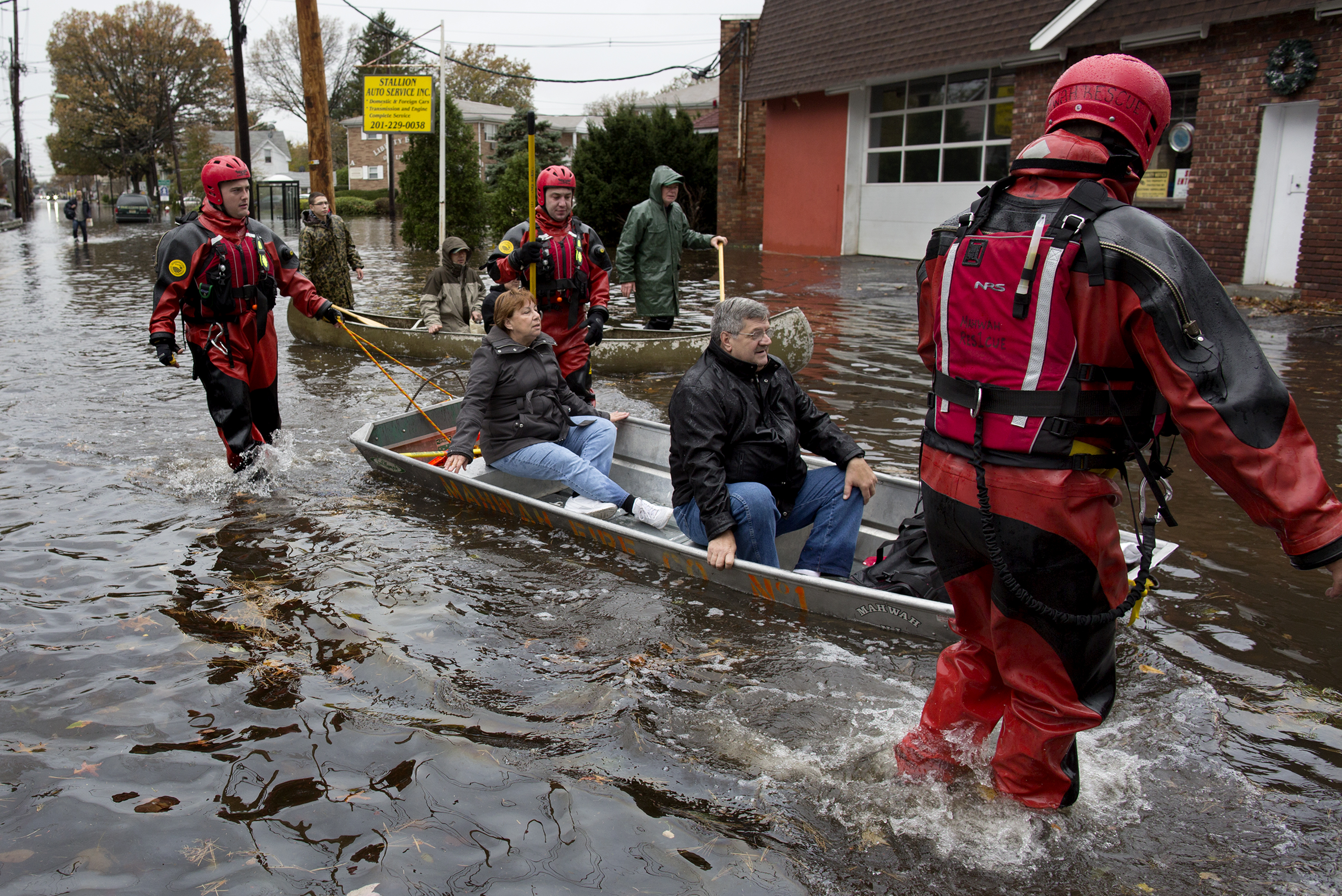Superstorm Sandy made landfall on Monday as predicted and then moved inland. It left immense destruction - some called it unprecedented - in its windy and watery wake. The full extent of the damage along the Atlantic seaboard and in states as far away as Georgia and Illinois will be unclear for a few days or even longer, but emergency officials generally agree the cost is likely will reach $50 billion or more.
The storm flooded large parts of New Jersey - the mayor of Hoboken said half the city was flooded on Tuesday - put around 8 million people in the dark at the height of the outages, and paralyzed large parts of New York City. Washington, D.C., Philadelphia and other cities along the heavily populated East Coast suffered significant damage as well. The loss of life - estimated at about 40 Tuesday afternoon - was remarkably low given the power, size and duration of Sandy.
As the remnants of the storm moved through central Pennsylvania on the way to Canada, residents and local, state and federal officials began the process of coping with disaster. It will be a massive undertaking..
The numbers of customers without power are just part of the problem. In New York and other cities, streets and underground utilities were still flooded Tuesday and transit systems were shut down or operating on a reduced schedule. In other places, there was no running water, sewage treatment plants were threatened, phone lines and cellphone towers were down and many roads, including some interstate highways, were blocked or closed by heavy rains or snows.
Even the most optimistic public officials say it likely will take at least a week or more to restore basic services in many locales. It will take longer to restore a sense of comfort and normalcy to the broad swath of the nation beaten and battered by the immense storm, which produced hurricane-force winds, dumped a foot of rain in some places and will bring about two feet of snow to some places in the Appalachians. More than 22 inches of snow already had been reported in parts of the Great Smoky Mountains National Park on Tuesday.
Though Sandy has lost much of its power, it still packs a punch. Wind and precipitation have diminished but the storm still can cause considerable damage. Indeed, those in Sandy's path should listen to safety officials, whose timely warnings and evacuation orders elsewhere surely reduced Sandy's toll.
The millions directly affected by Sandy have major work ahead of them. The impact of wind, rain, snow, falling trees, flooding and other effects has caused tremendous dislocation and significant damage to public and private property and infrastructure. Cleaning up communities and restoring individual lives to a sense of normalcy will require time and deep pocketbooks. That work already has started and will pick up speed daily. The task will be abetted by a welcome flood of assistance from public and private agencies, by aid from relief organizations, by workers from unaffected states and by helping hands of friends and neighbors.
Americans are resilient in the face of natural disaster. The aftermath of Sandy is no different. Schools, public transit, offices and other sites closed because of the weather are reopening and lives are slowly starting to return to normal. The process will continue for months. Memories of Sandy, though, will linger far longer.
